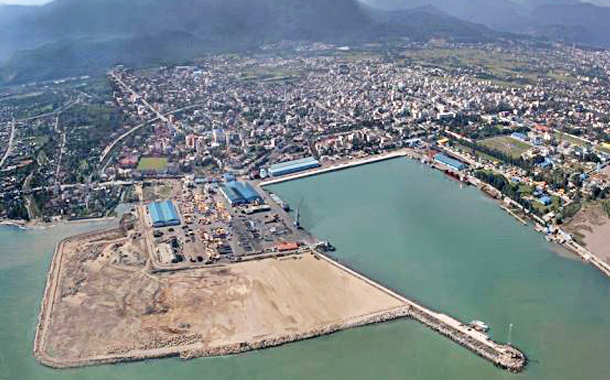Pakistan In a Frenzy Over Chabahar Port

NEW DELHI: The recent Chabahar Port agreement between Iran, India and Afghanistan has caused a frenzy in Pakistan, with many seeing it as an attempt at encirclement.
In the agreement, India has pledged to provide $500 million to develop Chabahar Port on Iran’s border with Pakistan. Delhi hopes the deal will give it prime access to the emergent markets of Afghanistan and Iran, and offset Islamabad’s influence in Central Asia.
The deal has been denounced by military circles in Pakistan. Speaking at a conference on Monday, Lt-Gen Asif Yasin Malik claimed this emerging “alliance” represented a “security threat to Pakistan”. At the same event, retired Lt-Gen Nadeem Lodhi said the deal signified a “formidable bloc” which had “ominous and far reaching implications” for the region. The Pakistani press has been swift to assert that the deal marks the country’s increasing isolationism, with Lt-Gen Malik blaming a “dysfunctional Foreign Office.”
India has long tried to gain access to Afghanistan via Pakistan, but persistent opposition from Islamabad has forced India to rethink its ambitions. Moreover, the Chabahar deal links into Delhi’s desire to exploit Iranian petrochemicals. As Bharat Karnad asserts, “there will not be a time in the next Century when India will not need Iranian energy”, Iran has “always been the energy lynchpin for India”. India’s designs on Iran’s Farzad-B gas field tie into Delhi’s desire to secure access to cheap energy in the decades to come.
However, the deal also has wider implications. India hopes that the deal will not only solidify exchange with Iran and Central Asia but that it will also begin to check China’s growing influence in the region, as signified in the Chinese-financed Gwadar Port project, 70km from Chabahar, and the $46 billion China-Pakistan Economic Corridor.
Tanvi Madan, a fellow at the Brookings Institution in Washington, asserts that Chabahar offers Delhi the opportunity to prevent China from becoming a new regional hegemon in Central Asia, showing that it too can bankroll infrastructure and development projects in partner countries.
The deal gives India Ports Global Private Limited a ten-year extendable lease over Chabahar port, in partnership with an Iranian company. Indian state-owned IRCON will build a 500km railway between Chabahar and Afghanistan, linking into the existing Iranian rail network. This will give Delhi increased access to export markets throughout Central Asia, the West Asia and Europe.
Without Chabahar, India risks becoming dependent on Chinese-backed connectivity throughout the region. Tanvi Madan asserts that India is trying to match China’s regional power and secure a free hand for itself in years to come, while making sure that “China is not the only option Middle Eastern countries have for trading in the future.
Bharat Karnad also perceives a potential military design on Chabahar, emphasising its “utility to the Indian navy as [a] base outflanking the Chinese setup in Gwadar, just 70 miles or so down that coast”. It could enable India to “instantly neutralize any big Chinese naval designs in that area”. This, coupled with Tajikistan’s offer to use Farkhor air base, could give India an increased military capacity vis-à-vis China, in Central Asia and the West Asia. This would suggest that, rather than being an anti-Pakistan deal, India’s main concern is with balancing the other Asian superpower.
However, Iran and Afghanistan have been quick to downplay the port’s strategic significance, heralding instead, the potential opportunity for regional rapprochement. Speaking in Islamabad last Friday, Iranian Ambassador Mehdi Honerdoost asserted that “Chabahar is not a rival to Gwadar”.
“We are ready for any rapprochement between regional countries… Trade and business is business, and politics is politics. We should separate them.”
Indeed, Iran first offered Chabahar to China and Pakistan, before seeking a deal with India. Ambassador Honerdoost maintained that the development remains open to additional partners. “We are waiting for new members. Pakistan… and China… are both welcome”.
Iran for its part wishes to reintegrate itself into international society and the global economy as soon as possible. Retired Ambassador MK Bhadrakumar asserts that Iran is also “keen to tap into China’s Silk Road projects in Pakistan. One major project could be the extension of the Iran-Pakistan gas pipeline along the China-Pakistan Economic Corridor leading to China’s Xinjiang province”.
Indeed, Bhadrakumar suggests that “China could turn out to be a principal user of Chabahar” in exporting its own goods into India. “Chabahar could eventually end up as a splendid pearl in the necklace of China’s One Belt One Road”.
As academic and commentator C. Raja Mohan argues, India will have to move fast if it is to capitalise on this deal. “The fact that it has taken more than a decade for India to begin work on Chabahar” epitomises India’s less-than-shining track record in regional infrastructure projects. The idea of Indian involvement in Chabahar was floated in 2003 and it has taken more than a decade to even ink a deal. Elsewhere, India’s ambitions on connectivity with Myanmar and Thailand have so far come to little. There is a “vast gap between an expansive rhetoric on promoting regional connectivity and the lack of institutional capacity to implement strategic projects across and beyond borders”
Iran can only wait so long before it looks to China. The success of Chabahar will thus be judged by India’s ability to break ground and get the cash flowing.



